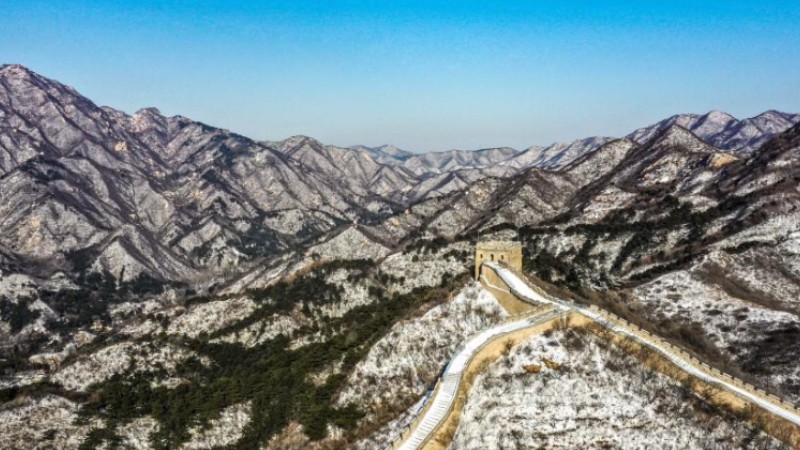Xinjiang Story: Scientists empower locals to fight desertification, boost incomes
URUMQI, Dec. 23 (Xinhua) -- A few inches beneath salt cedars and saxouls, two shrubs that fend off the desert, lies buried a botanist's gift for farmers in northwest China's Xinjiang Uygur Autonomous Region.
These scaly tubers, called cistanche, are precious tonics used in traditional Uygur medicines. Thanks to a group of sand-control scientists, villagers on the edge of the Taklimakan Desert, China's largest desert known as the "Sea of Death," have learned to grow cistanche by parasitizing them to the roots of sand-fixating plants.
In the Topaaizhik Village, located under Qira County, thousands of newly harvested cistanche crops have been laid out on the ground to dry. Villagers cover them with quilts at night to prevent them from being damaged by frostbite.
"Six kilograms of fresh 'dayun' (cistanche) can make one kilogram of dried 'dayun,' which can sell for 50-60 yuan (about 7-8 U.S. dollars) on the market," one villager told Xinhua.
Such bumper harvests used to be a rarity on this ancient battlefield between the desert and its human dwellers. Throughout history, Qira County has had to relocate three times after sandstorms and moving sands engulfed village houses and farmlands.
In 1983, the Xinjiang Institute of Ecology and Geography under the Chinese Academy of Sciences established a station in the county to tackle sandstorms and fight desertification.
One of their primary jobs included selecting and breeding drought-resistent plants to form a natural barrier against the encroaching sand. Since 2000, the station has promoted the afforestation of 15 sand-fixing plants, such as the endemic salt cedars and non-local saxouls, said Zeng Fanjiang, the leading researcher of the station.
Their research has, over the past 40 years, helped the county restore more than 16,000 hectares of natural vegetation. This has reduced the number of days each year with sandy weather from 270 to 120 and revived 38 villages on the periphery of the desert, said the veteran botanist.
Apart from making sandy lands inhabitable, this Qira approach to desert control is also known for increasing the productivity of the area.
Liu Mingting, a former leading researcher at the station, invented the technique of sowing cistanche seeds into the roots of sand-fixing salt cedars after discovering the symbiosis between the two in the 1980s. The method has since been refined and taught to local farmers.
"It's our belief that (work on) the ecological environment must be integrated with (efforts to improve) the livelihood," said Zeng. "Such approach also unites us with the locals."
Turgun Jappar, director of the county's sand-control center, recalled that local farmers responded enthusiastically to the scientists' proposal of taming the desert.
"Villagers who once abandoned their sand-ravaged villages came back to join our afforestation drive. They wanted to have their ancestral homes back," said the official.
The afforested shrubs were first managed centrally to ensure their survival, and were then contracted to farmers so that they can grow and harvest cistanche and other crops, according to Turgun Jappar.
He noted that the windbreaking and sand-fixing plants now contribute 30 percent of the county's yearly per capita income.
Following the success of cistanche, scientists continued to look for other productive options. One of them is yellow nutsedge originating from Africa. Its chewy, bean-sized tubers, called earth almonds, can be made into oil or soya milk-like juice.
"This plant is a sand-fixing grass as well as a high-yielding cash crop. It can work two wonders on its own," said Xue Jie, a researcher at the station.
At 36, Xue is one of the new-generation scientists at the station, whose missions have moved beyond desert control and productive use of sandy lands.
"Our new studies include the management of the local water resources and calculating the plants' carbon sink. But the goal of improving lives of the local community remains unchanged," he said.
Photos
Related Stories
- Scenic area opens to promote night economy in Xinjiang
- Traditional hide skis transformed into modern sports equipment in Xinjiang
- In pics: ski resort in Xinjiang
- Kazak Autonomous County of Mori speeds up development of clean energy in Xinjiang
- Development of Xinjiang impresses Pakistani media and think tank representatives
Copyright © 2023 People's Daily Online. All Rights Reserved.









